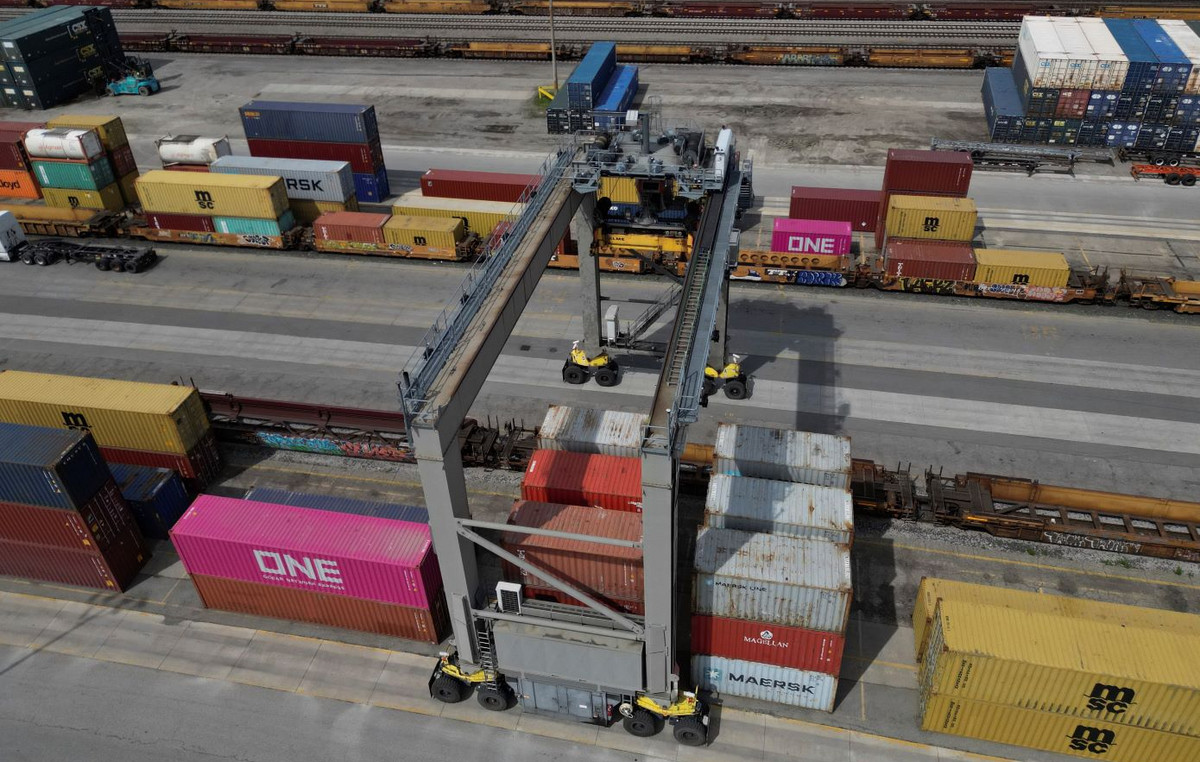The Ibovespa broke the sequence of five consecutive weeks of declines and ended it with gains of 1.7%, while the dollar depreciated 0.31% against the real in the last five days, with the Brazilian currency leading the way in the best performance in the world. between the baskets this Friday (13).
Throughout the week, the Brazilian stock market – which started Monday and Tuesday with an accumulated drop of 1.93% – turned around on the third day, favored by a lower aversion to risk around the world and by the rise in shares linked to commodities. , mainly to iron ore and oil.
At the time, iron ore futures in China jumped more than 5%. Brent oil closed at US$ 107.51 a barrel, up 4.93%. WTI ended up quoted at US$ 105.71, up 5.96%.
On Thursday and Friday, Wall Street played an important role in relation to the Brazilian stock market. On the penultimate day of this week, tech stocks began to gain ground, although caution in international markets continues amid fears of a global economic slowdown due to lockdowns in China and rising interest rates around the world – giving signs relief for the markets.
On the day, the main technology index of the United States ended the session with a slight increase of 0.06%, at 11,370.96 points.
In turn, throughout the trading session on Friday, relief both in the domestic and US markets took place after Jerome Powell, chairman of the Fed (Federal Reserve, US central bank) spoke about inflation.
In an interview with Marketplace radio show, the U.S. central bank chief said the Federal Reserve’s battle to rein in inflation “will include some pain” as the impact of higher rates is felt, but that the worst outcome would be if prices continued to accelerate.
“We fully understand and recognize how painful inflation is,” he said. He repeated his expectation that the Fed will raise interest rates by 0.50 percentage point at each of its next two meetings, but promised that if the data turns the wrong way “we are prepared to do more.”
The Federal Open Market Committee (FOMC) of the Federal Reserve, the central bank of the United States, announced on May 4 that it raised the country’s interest rate by 0.5 percentage point, the highest increase in more than 22 years. With this, it becomes 0.75% to 1% per year.
It is also worth noting that, in Brazil, the Monetary Policy Committee (Copom) decided to raise the Selic rate for the 10th consecutive time, to 12.75%. According to a survey carried out by the CNN Brasil Business with Michael Viriato, strategist at Casa do Investidor, this is the longest cycle of subsequent highs in history.
Dollar
The US currency is down 0.31% on the week – which, by Thursday, would have been 1.36%. What supported the dollar in the early days was the spread of pessimism among investors regarding the global economy and an aversion to risk.
And specifically on Wednesday, when it rose 0.22% on trading, the main driver was the market’s repercussion on the US Consumer Price Index (CPI) and the Broad Consumer Price Index. (IPCA) in Brazil, both referring to April.
US inflation slowed in April for the first time since August 2021. However, prices still rose, but at a slower pace than in previous months.
The index rose 8.3% in the 12 months ended in April, the Center for Labor Statistics said. It was down from 8.5% in March, which had been the highest level in more than 40 years.
In Brazil, inflationary apprehension in costs fell 1.14% in April this year, according to the Brazilian Institute of Geography and Statistics (IBGE).
It was the first retraction of the indicator for the segment since February 2021, after posting 14 consecutive highs. IBGE data also point out that the housing sector was the only segment that showed deflation in April.
The drop in the monthly costs of Brazilian real estate was mainly driven by the reduction in the price of residential electricity, which fell by 6.2% this month.
But the news was not enough to support the appreciation of the dollar against the real. This Friday, the currency had the biggest daily devaluation in the last ten days, of 1.65%, as investors took profits after a week of great instability in global markets.
The dollar’s decline in this trading session was such that it not only wiped out its weekly gains but also led the price to accumulate a slight drop in the period, which thus ends a sequence of three weeks of appreciation.
*With information from Reuters
Test your knowledge about the Ibovespa
Let’s start with an easy one: what is the Ibovespa?
Who is responsible for calculating the Ibovespa?
What types of assets are eligible to be listed on the Ibovespa?
Which of these is NOT a criterion for a stock to enter the Ibovespa
How many shares are currently in the Ibovespa theoretical portfolio?
How often is the Ibovespa theoretical portfolio reviewed?
What is the most important stock on the Ibovespa?
What is the smallest share on the Ibovespa?
Each Ibovespa point is equivalent to 1 real. This statement is
What is the historical record for closing the Ibovespa?
Try again!
Tip: follow CNN Business to understand more about Ibovespa
Nice job!
You know a lot about the Ibovespa, but you could know a little more
Sensational!
Congratulations! Are you an Ibovespa expert?
Source: CNN Brasil
I am Sophia william, author of World Stock Market. I have a degree in journalism from the University of Missouri and I have worked as a reporter for several news websites. I have a passion for writing and informing people about the latest news and events happening in the world. I strive to be accurate and unbiased in my reporting, and I hope to provide readers with valuable information that they can use to make informed decisions.







